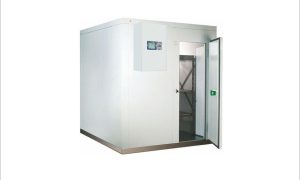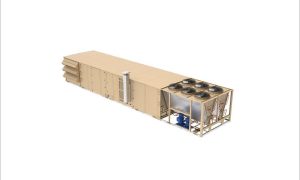The Indian logistics industry is poised for substantial growth, with the cold supply chain sector expected to expand rapidly. However, sustainable practices such as tech adoption, solar energy, EV transportation, and resource optimisation are crucial to address environmental concerns.
The Indian logistics industry is predicted to experience significant growth in the coming years, with a projected compound annual growth rate (CAGR) of 10-12 percent by 2025. This expansion is expected to elevate the sector’s value from USD 250 billion in 2021 to around USD 380 billion. One particularly fast-growing segment Within the logistics sector is India’s cold supply chain. The country has witnessed a surge in demand for temperature-controlled and sensitive supply chains, notably driven by the COVID vaccine distribution efforts. This increased attention has placed the cold chain sector at the forefront, and it is anticipated to grow at an impressive CAGR of over 20 percent by 2025, according to a recent report by JLL.
Despite the growing demand and favourable policies to strengthen the cold storage and transportation infrastructure, there is also a growing recognition of the significant energy consumption and carbon emissions associated with the existing cold supply chain infrastructure.
The consumption of electricity, water, and packaging in Cold Chains is significant, covering 24×7 temperature-controlled storage, specialised packaging, transportation requirements, and reefer vehicles. With rising focus on global businesses and India’s aim to cut down on its emission intensity by 45 percent by 2030 and achieve the goal of net zero by 2070, developing a green and sustainable cold chain network has become crucial.
(https://www.orfonline.org/expert-speak/a-climate-resilient-health-system-of-tomorrow-can-only-be-possible-if/)
Below are several critical areas where adopting environmentally friendly, greener processes can promote sustainable practices within the cold chain industry.
Tech adoption and digitisation
While much has been discussed regarding the advantages of digitisation in cold supply chain networks, a crucial aspect lies in resource optimisation and leveraging AI-driven intelligent processes. By incorporating technology-enabled automation systems that utilise AI, Robotics, and IoT devices, it becomes possible to monitor temperature levels and drive energy efficiency. Adopting technology provides transparency, enabling transporters to monitor emissions, optimise fuel consumption, and reduce costs, thereby reducing carbon emissions. Efficient planning and consolidation involve:
- Optimising routes.
- Implementing real-time tracking and tracing.
- Making strategic use of partially loaded trucks or containers by combining deliveries intelligently.
Switch to Solar
Switching completely or partially to a solar power-based energy source for cold storage can help curb carbon footprints drastically. Additionally, it is easier to adapt to as well, as the warehouse can install solar panels on the roof and open areas around the warehouse to meet the partial or complete energy requirement of a cold storage facility.
EV/ CNG transportation
Smarter transportation is a crucial focus area for refrigerated movements. The transportation sector is responsible for approximately 25 percent of global CO2 emissions. In India, CO2 emissions from fossil fuels have grown at a compound annual growth rate of 4.5 percent, compared to 1.16 percent in developed countries. By transitioning to electric vehicles (EVs) and effectively planning the movement of goods, we can reduce our reliance on fossil fuels, minimise waste, and significantly decrease carbon emissions. Additionally, employing smaller vehicles with intelligent packaging for last-mile temperature-controlled deliveries can revolutionise energy management in refrigerated transportation.
Lastly, Recycle, Reuse and Refurbish: As is valid for any industry or business, adopting processes that focus on recycling, reusing and refurbishing resources and tools can help reduce waste and optimise resource consumption, thereby limiting carbon footprint. For Example, water discarded from cooling units in a cold storage facility can be recycled for the garden, cleaning, and other purposes. At the same time, reusable packing and staking materials can help cut costs and reduce waste. Such thoughtful use of resources can help in the long term to also optimise operations and maximise the value of the assets.
Combating climate change has become a significant obligation for businesses, and the decarbonisation of supply chain networks has the potential to bring about transformative changes. The future necessitates environmentally friendly and carbon-neutral logistics, and considerable collaborative endeavours are underway to achieve this goal. Implementing technology within cold chain networks has emerged as a valuable means to establish an efficient, environmentally conscious, resilient, and adaptable cold chain that can effectively support the business ecosystem of a nation.
Cookie Consent
We use cookies to personalize your experience. By continuing to visit this website you agree to our Terms & Conditions, Privacy Policy and Cookie Policy.















